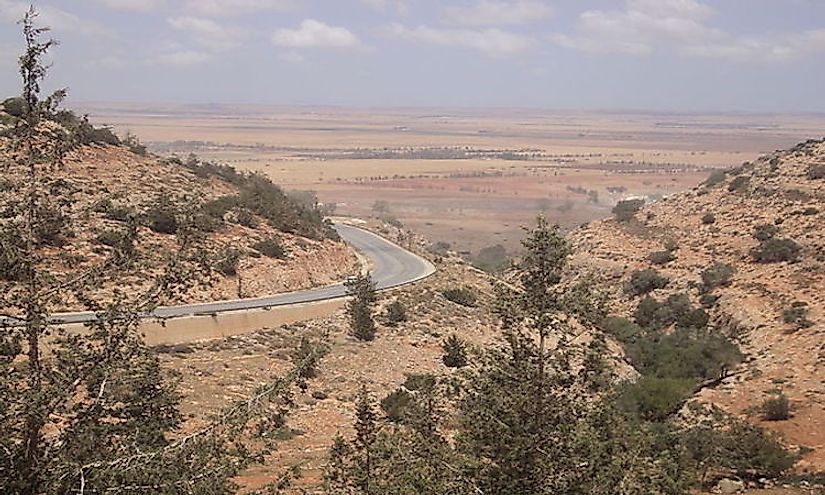Ecological Regions Of Tunisia

Tunisia is located in northern Africa. The northern topography is mountainous, and the central area is dry plain. The southern area of the country is dry, barren desert.
Climate Of Tunisia
The climate of the country, similar to the topography, is greatly varied. The climate can be divided into two major areas, the north, influenced by the Mediterranean, and the south, influenced by the Saharan desert. The temperatures are mild along the coast. The summer is hot and dry in the north, and the winter is mild and consists of frequent rains. The precipitation also greatly varies, as the north receives significantly more rainfall than the south. The variation in climate leads to the great diversity of ecoregions in Tunisia.
Flora and Fauna Of Tunisia Housed In The Ecoregions Of The Country
The nine major regions can be characterized with the following biomes:
The temperate coniferous forests are predominantly filled with the Atlas Cedar. Other variations of coniferous trees growing in the region include Aleppo Pine and Algerian fir. The vegetation in the Mediterranean forests, woodlands, and scrub ranges from forests, woodlands, savannas to grasslands. The hot, dry summers of the region make it prone to fire, which is a major threat to the vegetation and the wildlife in the region. Also, problems like overgrazing, logging and urbanization have led to massive degradation of the region as habitat to wildlife. The Desert and Xeric Shrublands is characterized with a low precipitation, thence a great presence of wood stemmed shrubs and plants. The flooded grasslands and savannas are characterized by very wet soil content. The area is predominantly covered with Coniferous swamp, Dambo and Fen. The freshwater biome in the area is full of insects, aquatic birds and water plants. Some examples include the Otter, the Heron and the Water Lilly. The marine wildlife of Tunisia includes marine dolphins, jellyfish etc.
Conservation Efforts In Tunisia
Tunisia’s growing urbanization and reliance on agriculture leads to severe deforestation, which is a major threat to the environment of the region. Another major threat to the country is overpopulation. In the time period of 1990-98, only 52% of the residents had proper access to adequate sanitation, which further highlights the problem created by overpopulation. The most noticeable conservation effort in Tunisia is the establishment of the Ichkeul National Park located on the north of the country. The park covers 12,600 hectares of area and serves to preserve thousands of species of both plants and animals in the area.
Ecological Regions Of Tunisia
| Rank | Ecoregions of Tunisia | Biome |
|---|---|---|
| 1 | Mediterranean Conifer and Mixed Forests | Temperate Coniferous Forests |
| 2 | Mediterranean Dry Woodlands and Steppe | Mediterranean Forests, Woodlands, and Scrub |
| 3 | Mediterranean Woodlands and Forests | Mediterranean Forests, Woodlands, and Scrub |
| 4 | Northern Saharan Steppe and Woodlands | Deserts and Xeric Shrublands |
| 5 | Saharan Halophytics | Flooded Grasslands and Savannas |
| 6 | Temporary Maghreb | Freshwater |
| 7 | Permanent Maghreb | Freshwater |
| 8 | Gulf of Sidra Tunisian Plateau | Marine |
| 9 | Western Mediterranean Sea | Marine |











